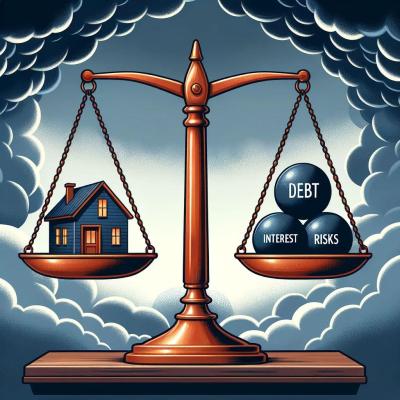The Discrepancy of Highly Leveraged Borrowers
Bullock acknowledged that the pressure on indebted households varies significantly depending on the level of leverage. Surprisingly, approximately 25% of highly leveraged borrowers with loans exceeding four times their income face the challenge of paying more for essential expenses and housing than what they receive in income.
This indicates that the situation is far more severe for a specific group of borrowers than for those with more modest levels of debt.
The Limitations of the Household Expenditure Measure (HEM)
It's important to note that the RBA used the Household Expenditure Measure (HEM) to downplay the severity of the situation. The HEM is a measure that reflects the median spend on absolute basics and the 25th percentile spend on discretionary basics, excluding rents and mortgage payments.
However, the HEM is based on the most basic standard of living and doesn't accurately represent households with mortgages. Moreover, it assumes that households have no other debts, which is often unrealistic.
In fact, the latest RBA Financial Stability Review estimated that 13% of variable rate borrowers experience a cost of living that exceeds their incomes when considering additional expenses like private health insurance and school fees.
The Unavoidable Impact of Fixed Rate Mortgage Resets
Despite the RBA's efforts to keep the cash rate on hold, Australia's fixed rate mortgage reset process is still ongoing and will continue until mid-2024. Consequently, average mortgage repayments will continue to rise across the country.
With Wednesday's CPI inflation data announcing higher-than-expected figures, the possibility of the RBA maintaining the cash rate at its current level seems unlikely. Further rate hikes could push more households underwater, exacerbating the mortgage stress situation.
The Ominous Cloud of Rising Unemployment
Undoubtedly, the biggest risk to Australian households is the steady rise in unemployment. Australia's record immigration numbers impose a demand of around 37,000 new jobs every month just to stabilize the unemployment rate, assuming a constant participation rate.
However, even if job growth slows down to the pre-pandemic average of 22,000 new jobs per month, Australia's unemployment rate could surpass 5% within a year, as indicated by independent economist Tarric Brooker's analysis.
When combined with the potential for further mortgage rate increases, the rising unemployment rate poses a grave threat to numerous Australian households already burdened by mortgage debt. The risk of financial distress looms large.
Published: Friday 27th October, 2023
Please Note: If this information affects you or is relevant to your circumstances, seek advice from a licensed professional.









